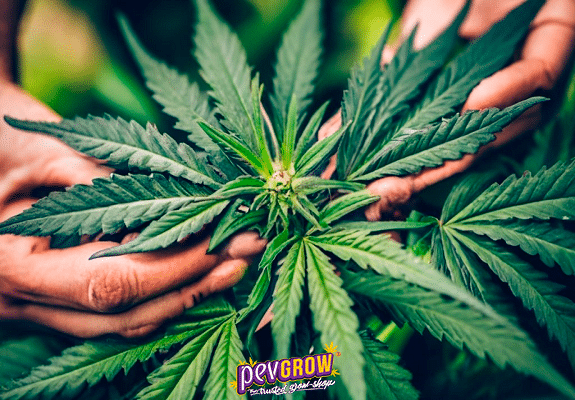

13-10-2023 09:00:19 - Updated: 13 October, 2023
In the world of cannabis cultivation, the FIM or “Fimming” pruning technique has proven to be a valuable tool for growers looking to maximize the yield and quality of their harvests. In this comprehensive guide, we will explore in detail what FIM pruning is, how it is properly carried out, and what results you can expect when implementing this technique in your marijuana cultivation.
🧐 The Importance of Pruning in Cannabis Cultivation
Before delving into the details of FIM pruning, it is essential to understand the relevance of this technique in marijuana seed cultivation. Pruning is a fundamental practice that allows growers to influence the plant’s development and energy distribution, which in turn affects the size and quality of the buds.
Unlike other pruning techniques, FIM (an acronym for “Fuck, I Missed” in English) has stood out for its ability to promote more branched growth and a greater number of shoots. This translates into a more abundant and higher-quality final harvest.
Throughout this guide, we will focus on the FIM pruning technique and explore its applications, benefits, and how to effectively carry out this process. From the essential steps for performing FIM pruning to the optimal moments to apply it, this guide will provide you with the necessary information to boost your cannabis cultivation.
👾 How to Perform FIM Pruning
The FIM pruning technique involves a strategic cut to promote branched growth and increase the number of shoots on your hemp plant. Below, I will guide you through the essential steps to effectively carry out FIM pruning:
- Prepare Your Tools and Workspace: Before starting, make sure you have sharp and clean (sterilized) pruning tools. This includes sterilized pruning shears to prevent any kind of infection in the plant. Work in a well-lit space and ensure you have enough room to maneuver comfortably.
- Identify the Correct Cutting Point: The key to successful FIM pruning lies in selecting the right cutting point. Look for new growth at the top of the plant and locate the newest set of leaves. Just above this set, you will find the ideal place to make the cut.
- Make the Cut with Precision: Using the pruning shears, make a clean and precise cut at an angle of approximately 45 degrees. The goal is to remove about 80% of the new growth, leaving only a small piece of shoot and the youngest leaves.
- Monitor Post-Pruning Growth: After FIM pruning, observe how the plant responds. You will notice an increase in branching and the growth of new shoots. This is the indicator that FIM pruning has been successful.
- Adjust as Needed: As the plant continues to grow, you may want to make additional adjustments to maintain an optimal balance between vertical and horizontal growth.
Remember that practice makes perfect. Over time, you will gain experience and confidence in performing FIM pruning
⚠️ When to Perform FIM Pruning
The choice of timing to carry out FIM pruning is crucial for maximizing its benefits. We recommend performing FIM pruning when the marijuana plant has between 3 and 5 well-developed nodes. At this point, the plant is mature enough to respond positively to pruning but has not yet grown too much for the process to be overly stressful.
It is important to remember that each plant is unique, and you may need to adjust the timing of pruning based on the specific characteristics of your crop. Observing the plant’s development closely will allow you to determine the optimal moment to carry out FIM pruning.
📲 FIM Pruning Vs Normal Bud Pruning
FIM pruning and apical pruning or normal bud pruning are two common techniques used in cannabis and hemp cultivation. Both aim to increase bud production by influencing the plant’s energy distribution. However, they differ in how they are carried out::
FIM Pruning:
- Technique: Involves cutting about 80% of the new growth at the top of the plant.
- Result: Encourages more branched growth and a greater number of shoots.
- Benefits: Increases the total number of buds and promotes a more even distribution of the plant’s energy.
Normal Pruning:
- Technique: Involves cutting the main growth point (apex) of the plant.
- Result: Promotes a single, robust, and vigorous main bud divided into 2 tips.
- Benefits: Produces 2 large central buds instead of 1
The choice between FIM pruning and apical pruning will depend on your cultivation goals and your plant’s characteristics. Some growers even combine both techniques for optimal results.
⭐ Results and Evolution after FIM Pruning
After applying the FIM pruning technique correctly, you are likely to observe a series of significant changes in the development of your hemp plant. Below, we will detail the most common results that growers tend to experience:
- Increased Branching and Additional Shoots: FIM pruning is designed to stimulate lateral growth and the formation of new shoots. As a result, you will see an increase in branch density and shoots at the top of the plant. This translates into a greater number of potential flowering sites.
- Balanced Energy Distribution: By reducing vertical growth in favor of horizontal growth, FIM pruning promotes a more even distribution of the plant’s energy. This means that each branch receives an adequate amount of resources, which can result in larger and higher-quality buds.
- Increased Flowering Surface: With more branches and shoots available for flowering, the plant has a larger surface for bud production. This results in a more abundant final harvest and can maximize your crop’s yield.
- Improved Air and Light Circulation: The branched structure resulting from FIM pruning facilitates better air circulation and light penetration inside the plant. This is crucial for preventing issues like mold and ensuring that all parts of the plant receive the necessary light for photosynthesis.
- Adaptability to Limited Spaces: FIM pruning can be especially beneficial in growing spaces with height limitations. By encouraging more horizontal growth, this technique allows plants to adapt to confined spaces more effectively.
⛳ FIM Pruning in Autoflowering Varieties
FIM pruning can also be a valuable tool in the cultivation of autoflowering cannabis varieties. However, it is important to consider some specific considerations:
Autoflowering plants have a shorter life cycle and tend to flower based on age rather than relying on the light cycle. Therefore, it is crucial to perform FIM pruning in the early stages of plant growth, usually around the third or fourth node.
When applying FIM pruning in autoflowering varieties, the goal is to stimulate lateral growth and the formation of multiple shoots without significantly interfering with the flowering cycle. This can lead to a more abundant and higher-quality final harvest, even in autoflowering plants.
If you are new to cultivation and do not feel confident in performing this technique correctly on autoflowering varieties, it is best not to do it, as autoflowers start flowering after 3 or 4 weeks of life, and if not done correctly, the plants can end up small.
✨ FIM Pruning in Outdoor Cultivation
When growing outdoors, there are additional factors to consider when applying the FIM pruning technique. The outdoor environment provides a unique set of challenges and advantages for marijuana cultivation. It is important to pay attention to local weather conditions and the natural light available. FIM pruning can be especially beneficial for cannabis plants grown outdoors, as it allows for better utilization of sunlight and facilitates air circulation in the natural environment.
At the same time, it is essential to protect plants from adverse factors such as strong winds or heavy rains that may cause damage to freshly pruned branches. Providing good support and protection can be key to the success of FIM pruning in outdoor cultivation. It is important to remember that results may vary depending on the specific conditions of your cultivation, such as the strain type, environment, and care provided. Observing the development of your plant closely will allow you to adjust your pruning approach according to individual needs.
Outdoor FIM Pruning: Additional Tips
When it comes to FIM pruning in outdoor crops, there are some additional tips that can be very helpful:
- Climate Monitoring: Keep an eye on local weather conditions. If strong winds or storms are expected, consider postponing FIM pruning to avoid potential damage to freshly pruned plants.
- Soil Elevation: If possible, slightly elevate the soil around the plants. This can help drain excess water and prevent waterlogging problems that may arise after pruning.
- Animal Protection: If there are wild animals in the area, consider installing a barrier or protection system to prevent them from approaching freshly pruned plants.
- Mulching: Applying a layer of mulch around the base of the plants can help maintain soil moisture and protect the roots.
🚀 FIM Pruning in Specific Varieties
It is important to note that the effectiveness of FIM pruning may vary depending on the marijuana variety you are growing. Some strains may respond more favorably to this technique, while others may require adjustments in the timing or intensity of pruning.
Before applying FIM pruning, research and familiarize yourself with the specific characteristics of the variety you are cultivating. Consulting with experienced growers of that particular strain can also provide valuable information. To give you an idea, sativas and sativa-dominant hybrids tend to respond much better to pruning than indica and ruderalis varieties.
✅ Final Considerations and Conclusions about FIM Pruning in Marijuana
In summary, FIM pruning is a valuable technique that can significantly enhance the yield and quality of your marijuana crop. By understanding the fundamentals of this technique and applying it carefully and precisely, you can maximize the potential of your plants and reap rewarding benefits. Always remember to pay close attention to the individual needs of your plants and adjust your pruning approach based on the specific conditions of your cultivation. With practice and experience, FIM pruning can become an invaluable tool in your arsenal of cultivation techniques.
The FIM pruning technique is a valuable tool in the arsenal of any cannabis grower. By learning how to apply this technique accurately and strategically, you can significantly enhance the yield and quality of your harvests. Always remember to observe the individual needs of your plants closely and adjust your approach accordingly. With practice and patience, FIM pruning can become an invaluable skill in your experience as a marijuana grower.
🎯 FAQs on FIM Pruning
What is better, normal apical pruning or FIM?
The choice between apical pruning and FIM pruning depends on your cultivation goals and your plant’s characteristics. Normal apical pruning focuses on stronger vertical growth, while FIM pruning encourages more branched and lateral growth. Combining both techniques can be an effective strategy for optimal results.
What happens if I do FIM pruning incorrectly?
If you perform FIM pruning incorrectly, the plant may experience stress and take additional time to recover. However, in most cases, plants are quite resilient and can bounce back over time. It is important to learn from the experience and adjust your approach for future prunings. Usually, if you do FIM pruning incorrectly by cutting too little, the plant will continue to grow as usual. If you cut too much, you’ll end up with a regular apical pruning.
How many times can FIM pruning be done?
In general, FIM pruning can be performed multiple times throughout the plant’s growth cycle. However, it is important to note that performing multiple FIM prunings can increase stress on the plant. Observing the plant’s response to each pruning will allow you to determine how many times it is appropriate to perform it. In outdoor plants, you can do the first FIM pruning at the fourth node, and after 2 or 3 weeks, perform FIM pruning on the shoots that appear from the first pruning, and so on.





